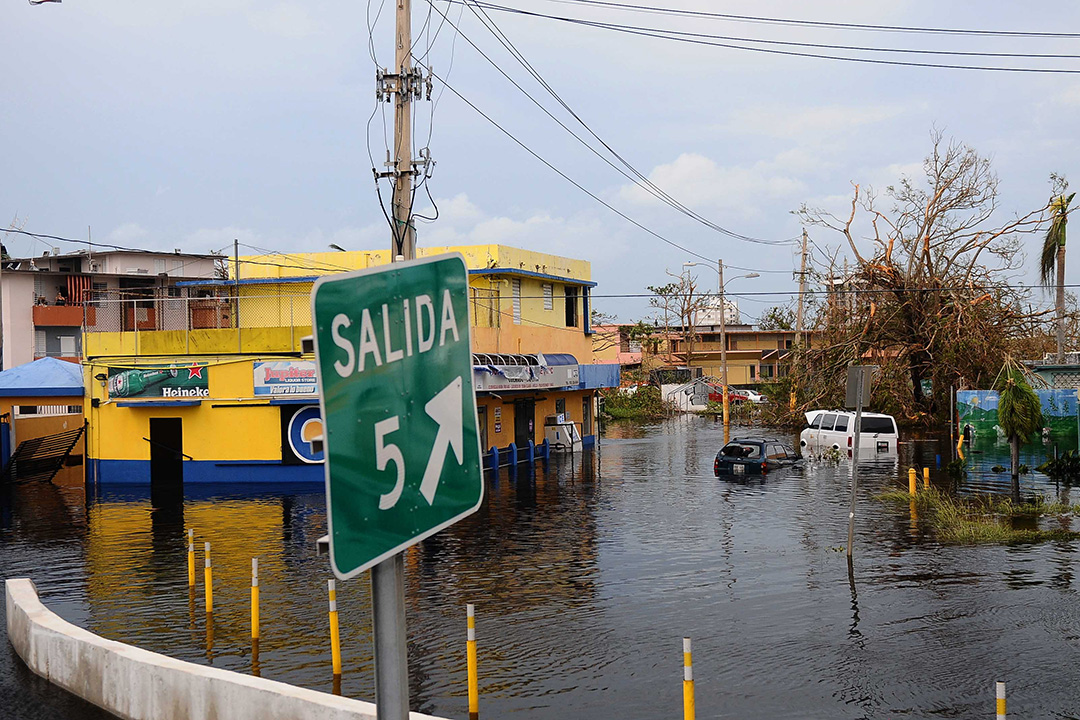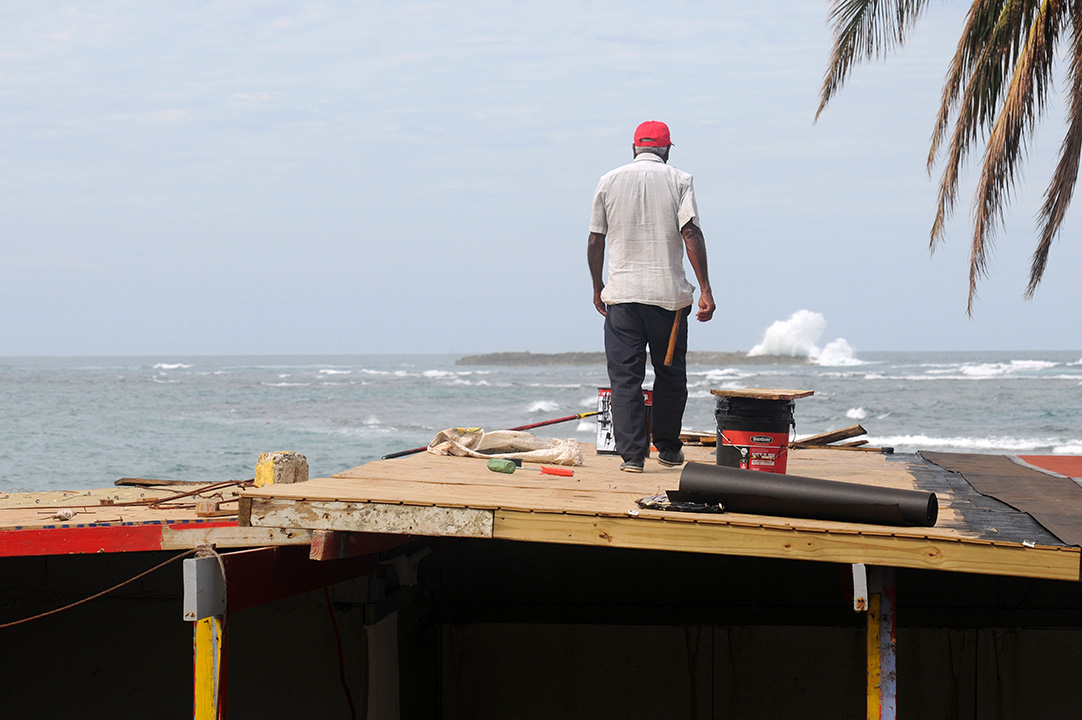A paper published by researchers at the Milken Institute School of Public Health on Thursday provides the data and methodology underlying an independent report that estimated there were 2,975 excess deaths in Puerto Rico during the six-month period after Hurricane Maria.
The new study also tracks the trends for mortality during that period. The study found that people living in all areas of Puerto Rico faced an elevated risk of mortality during the first two months after the storm, but this risk elevation was most prominent, and prolonged, for people living in the poorest parts of the island.
This study offers public health officials a method to accurately size up the excess mortality due to natural disasters all over the world, said Carlos Santos-Burgoa, a professor of global health at Milken Institute SPH and lead author of the study.
“All jurisdictions should use total excess mortality as a practical, timely and sensitive way to monitor deaths after natural disasters,” Dr. Santos-Burgoa said. “Public health officials can then step in with rapid interventions and influence the actions of other sectors in order to protect the most vulnerable populations.”
The research was commissioned in February by the Puerto Rican government to provide an independent and accurate estimate of the number of people who had died after the category 4 hurricane. Unlike many post-disaster mortality studies, the researchers focused on all excess mortality related to the storm, not just deaths that were recorded as storm related on death certificates and in other official records. The investigation also evaluated the process of certifying deaths on the island and the Puerto Rican government’s communication to the public before, during and after the storm.
The study was a collaboration between researchers at Milken Institute SPH and the University of Puerto Rico Graduate School of Public Health. It was based on official death certificates and other mortality data recorded from Sept. 1, 2017, through the end of February 2018. Using a mathematical model that accounted for annual and seasonal variability, migration, sex, age and socioeconomic status of municipalities, the team compared the total number of deaths that were observed to occur during that time to the number that would have been expected to occur in a typical year.
This study is the only one of recent peer reviewed reports to factor in the island’s population in estimating the number of excess deaths in Puerto Rico after the hurricane. This is important because a total of 241,251 people left the island from right before the storm hit on Sept. 20, 2017, through the end of February, about 8 percent of the island’s population. Such a large displacement in population must be considered in order to get an accurate mortality count, the authors say.
The paper describes the mathematical modeling and the rationale for selecting the most appropriate one. Using this model, the team estimated there were a total of 2,975 excess deaths—deaths above and beyond what could be expected in a normal year without a hurricane—from September 2017 through the end of February 2018. That number is still an estimate based on multiple factors but researchers say it is highly accurate, with a 95 percent confidence interval that ranges from a high of 3,290 to a low of 2,658.
The researchers found that 43 percent (1,271) of the total number of excess deaths were estimated to have occurred during the first two months (September and October) after the hurricane made landfall in the seaside municipality of Yabucoa, Puerto Rico. However, the excess deaths continued to be observed throughout the study period, with 347 excess deaths in November, 479 in December, 558 in January and 320 in February.
All areas of the island had elevated death rates in the first two months after the storm. However, for high and middle-income municipalities, the death rates fell back to the expected levels by November and December 2017 respectively. In contrast, areas of the island with the lowest levels of socioeconomic development saw a continued excess rate of mortality through the end of the study’s observation period. Over the entire period, the risk of dying was 22 percent higher than expected but was up to 60 percent for people living in the poorest municipalities of Puerto Rico.
Other higher risk groups that were identified by the study include the elderly and especially older male Puerto Ricans. They had a risk of death that was up to 35 percent higher than expected and their risk had not fallen back to baseline by the end of February 2018.
“These excess deaths are likely related to specific health consequences, such as injuries, worsening of chronic illnesses or acute illnesses associated with the conditions in Puerto Rico during and after the storm,” said Lynn R. Goldman, Michael and Lori Milken Dean of the Milken Institute SPH and co-author of the paper. “Additional research must be done to find out how the hurricane was involved in the 2,975 excess deaths identified in this study.”
The Milken Institute SPH team hopes to conduct such a study, one that would interview family members to find out the circumstances leading up to each death.
“This study’s results suggest that public health officials have underestimated mortality counts from past disasters in the United States and globally,” Dr. Santos-Burgoa said. “At a time when hurricanes and other types of extreme weather are increasing in intensity, it is critical that all jurisdictions adopt total excess mortality as a practical, timely and sensitive indicator for impact assessment and monitoring.”
“Assessment of the differential and persistent risk of excess mortality from Hurricane Maria in Puerto Rico,” was published online Oct. 11 in The Lancet Planetary Health.
Read more about the excess mortality project, the August report or to read the recommendations that will help Puerto Rico and other jurisdictions around the world prepare for future natural disasters.



